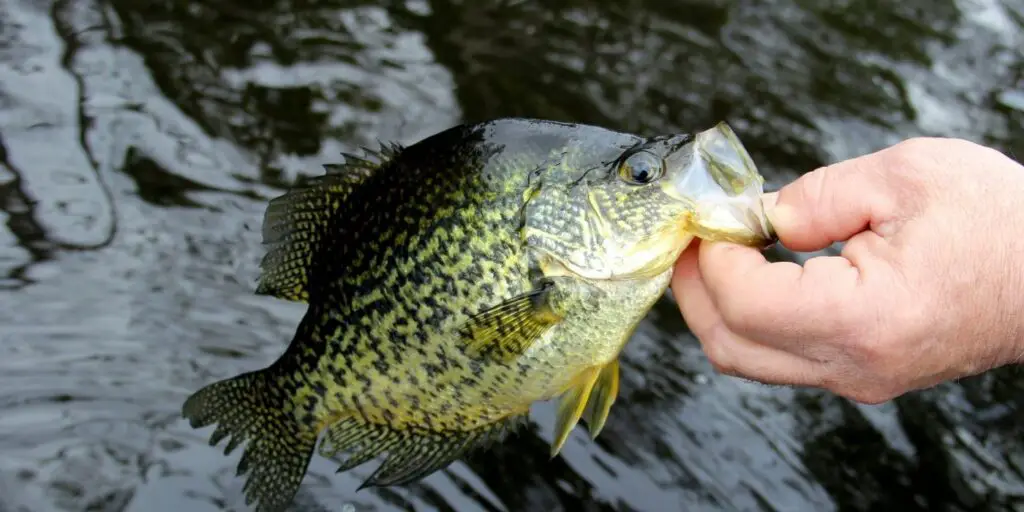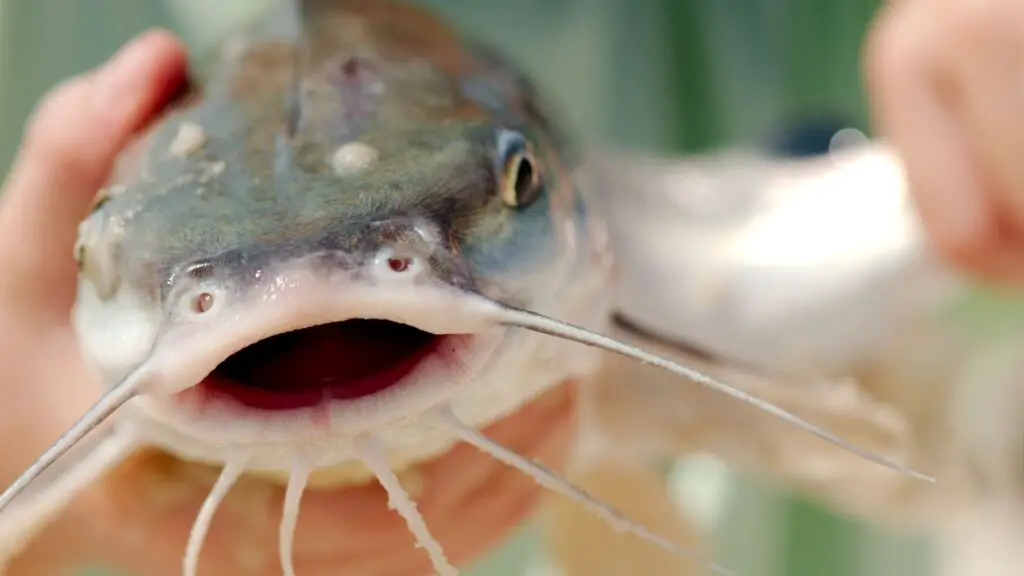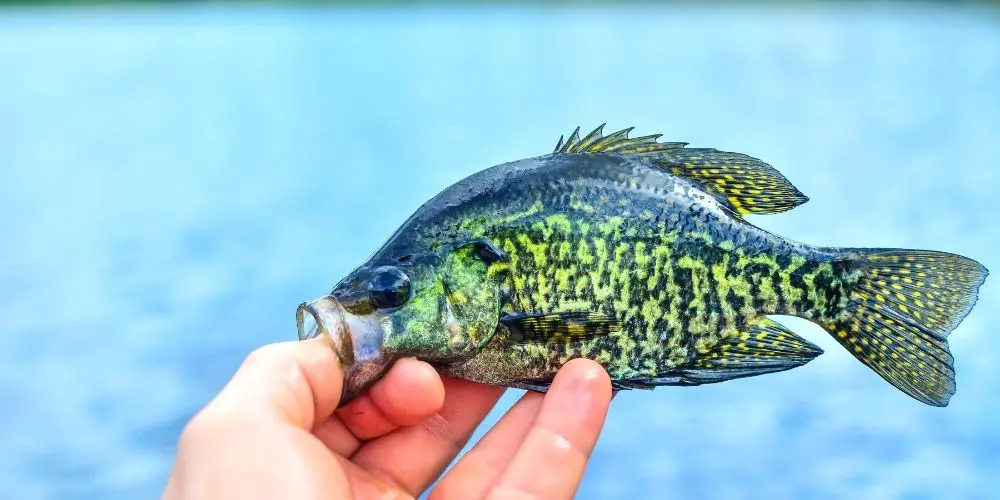What are the best freshwater fish to eat in Texas?
- Crappie
- Catfish
- Largemouth Bass
- Rainbow Trout
- Bluegill
As a proud Texan and an avid angler, I’ve always been fascinated by the diverse and delicious freshwater fish that thrive in our lakes, rivers, and streams. In this blog post, I’m going to take you on a culinary adventure to discover the top 5 freshwater fish to eat in Texas. So grab your fishing gear and your appetite, and let’s dive right in!
Crappie
What sets crappie apart from other fish in Texas?
Crappie is a beloved fish in Texas, thanks to its sweet, mild flavor and delicate, flaky texture. It’s also an excellent source of protein and contains essential vitamins and minerals, making it a nutritious and tasty option for any meal.
How to catch crappie in Texas?
Some of the best crappie fishing locations in Texas include:
- Lake O’ the Pines
- Lake Fork
- Lake Palestine
Related: Best Crappie Fishing in Texas
To catch crappie, you’ll need the right equipment and tactics:
- Rod and reel: A light-action spinning rod and reel combo is ideal for crappie fishing.
- Line: Use a 4-8 lb test monofilament or fluorocarbon line.
- Bait and lures: Small jigs, spinners, and live bait like minnows are effective for catching crappie.
- Technique: Cast your bait or lure near structures like brush piles, docks, or submerged trees, where crappie like to hide. Use a slow and steady retrieve to entice a bite.
How to prepare and cook crappie?
Here are some crappie dishes to try:
- Pan-Fried Crappie
- Crappie Ceviche
- Crappie and Vegetable Stir-Fry
Cleaning and filleting white crappie is similar to the process for catfish and largemouth bass.
- Make a cut behind the gills, angling towards the head.
- Turn the knife and run it along the spine, lifting the fillet and separating the meat from the bones.
- Once you reach the tail, cut through the skin and remove the fillet.
- Repeat on the other side.
- Remove the skin and any remaining bones from the fillets.

Catfish
What makes catfish a Texan favorite?
Catfish has always been a staple in the southern United States, and Texas is no exception. With their distinct taste and firm, flaky texture, catfish have earned a special place in the hearts (and stomachs) of Texans.
There are a few species of catfish that can be found in Texas waters, including:
- Channel catfish
- Blue catfish
- Flathead catfish
These catfish species differ slightly in taste and texture, but they all share a unique flavor that sets them apart from other fish. Additionally, catfish are rich in protein, vitamins, and minerals, making them a nutritious and delicious option for any meal.
How to catch catfish in Texas?
Catching catfish in Texas can be a fun and rewarding experience. Some of the best catfishing spots in Texas include:
- Lake Tawakoni
- Lake Texoma
- Lake Conroe
To catch catfish, you’ll need the right equipment and techniques.
Here’s a quick rundown of the essentials:
- Rod and reel: A medium-heavy rod with a baitcasting or spinning reel is ideal.
- Line: Use a strong monofilament or braided line with a 15-20 lb test weight.
- Bait: Catfish are known for their strong sense of smell, so using stink bait like cut bait, chicken liver, or prepared catfish bait is your best bet.
- Technique: Cast your bait into areas where catfish are likely to be, such as near underwater structures, deep holes, or areas with slow-moving water.
How to prepare and cook catfish?
Once you’ve caught your catfish, it’s time to enjoy the fruits of your labor.
Here are a few traditional Texan catfish recipes to try:
- Southern Fried Catfish
- Blackened Catfish
- Catfish Gumbo

Before you start cooking, it’s essential to clean and fillet your catfish properly.
Here are some tips:
- Use a sharp fillet knife and make a cut behind the gills, angling towards the head.
- Turn the knife and run it along the spine, cutting through the rib bones while keeping the blade as close to the spine as possible.
- Once you reach the tail, cut through the skin and remove the fillet.
- Repeat on the other side.
- Remove the skin and any remaining bones from the fillets.

Largemouth Bass
Why is largemouth bass a sought-after fish in Texas?
Largemouth bass is one of the most popular game fish in Texas and for a good reason. With a tender, mild flavor, and flaky texture, largemouth bass is a tasty treat that appeals to many palates. Plus, it’s a good source of protein, vitamins, and minerals, making it a healthy addition to your diet.
How to catch largemouth bass in Texas?
If you’re looking to reel in largemouth bass in Texas, you’ll want to head to these hotspots:
- Lake Fork
- Sam Rayburn Reservoir
- Toledo Bend Reservoir
To catch largemouth bass, you’ll need the right gear and tactics.
Here’s a quick guide to get you started:
- Rod and reel: A medium-action spinning or baitcasting rod and reel combo is perfect for largemouth bass fishing.
- Line: Use a 10-15 lb test monofilament or fluorocarbon line.
- Lures: Largemouth bass are known to be aggressive feeders, so using a variety of lures such as spinnerbaits, crankbaits, topwater lures, and soft plastics can be effective.
- Technique: Cast your lure near structures like docks, weed beds, or submerged trees where bass are likely to be hiding. Vary your retrieve speed and presentation to entice a strike.
How to prepare and cook largemouth bass?
Once you’ve landed your prized largemouth bass, it’s time to whip up a delicious meal.
Here are some popular Texan largemouth bass recipes to try:
- Grilled Largemouth Bass with Lemon and Herbs
- Largemouth Bass Tacos
- Beer-Battered Largemouth Bass
Cleaning and filleting largemouth bass are similar to catfish but with a few key differences.
Follow these steps:
- Make a cut behind the gills, angling towards the head, just like with catfish.
- Turn the knife and run it along the spine, but instead of cutting through the rib bones, lift the fillet and use the knife to separate the meat from the bones.
- Once you reach the tail, cut through the skin and remove the fillet.
- Repeat on the other side.
- Remove the skin and any remaining bones from the fillets.

Rainbow Trout
Why is rainbow trout a popular choice in Texas?
Rainbow trout is a favorite among Texans due to its mild, slightly nutty flavor and tender, flaky texture. It’s also a great source of protein, omega-3 fatty acids, and other essential nutrients, making it a healthy and delicious option for any meal.
How to catch rainbow trout in Texas?
Some of the top rainbow trout fishing spots in Texas include:
- Guadalupe River
- Canyon Tailrace
- Possum Kingdom Tailrace
To catch rainbow trout, you’ll need the right gear and techniques:
- Rod and reel: A light-action spinning rod and reel combo is perfect for trout fishing.
- Line: Use a 4-6 lb test monofilament or fluorocarbon line.
- Bait and lures: Small spinners, spoons, flies, and live bait like worms or salmon eggs can be effective for catching rainbow trout.
- Technique: Cast your bait or lure upstream and let it drift naturally with the current, or try casting across the current and retrieving with a slow, steady motion.
How to prepare and cook rainbow trout?
Here are some traditional Texan rainbow trout recipes to try:
- Grilled Rainbow Trout with Garlic and Herb Butter
- Smoked Rainbow Trout
- Rainbow Trout Almondine
Cleaning and filleting rainbow trout are a bit different from the other fish we’ve covered.
Follow these steps:
- Make a shallow cut along the belly from the vent to the gills.
- Remove the entrails and rinse the cavity thoroughly.
- Make a cut behind the gills, angling towards the head.
- Turn the knife and run it along the spine, lifting the fillet and separating the meat from the bones.
- Once you reach the tail, cut through the skin and remove the fillet.
- Repeat on the other side.
- Remove the skin and any remaining bones from the fillets.
Bluegill
What makes bluegill a delightful fish to eat in Texas?
Bluegill is a popular fish in Texas for its mild, sweet flavor and firm, flaky texture. It’s also a good source of protein and contains essential vitamins and minerals, making it a nutritious and enjoyable option for any meal.
How to catch bluegill in Texas?
Some of the best bluegill fishing locations in Texas include:
- Lake Austin
- Lake Conroe
- Lady Bird Lake
To catch bluegill, you’ll need the right equipment and tactics:
- Rod and reel: A light-action spinning rod and reel combo is ideal for bluegill fishing.
- Line: Use a 2-6 lb test monofilament or fluorocarbon line.
- Bait and lures: Small jigs, spinners, and live bait like worms or crickets are effective for catching bluegill.
- Technique: Cast your bait or lure near structures like weed beds, docks, or submerged trees where bluegill like to hide. Use a slow and steady retrieve to entice a bite.
How to prepare and cook bluegill?
Here are some Texan bluegill dishes to try:
- Crispy Bluegill Fish Tacos
- Baked Bluegill with Parmesan and Herbs
- Bluegill Chowder
Cleaning and filleting bluegill is similar to the process for catfish, largemouth bass, and white crappie.
Just follow these steps:
- Make a cut behind the gills, angling towards the head.
- Turn the knife and run it along the spine, lifting the fillet and separating the meat from the bones.
- Once you reach the tail, cut through the skin and remove the fillet.
- Repeat on the other side.
- Remove the skin and any remaining bones from the fillets.

Frequently Asked Questions
Here are some common questions about freshwater fishing in Texas:
Are there any freshwater fish to avoid in Texas?
While the fish listed in this blog post are generally safe and delicious to eat, it’s always a good idea to check local fishing regulations and consumption advisories for information on specific bodies of water and species.
Can I fish for these species all year round?
Most of the fish mentioned in this post can be caught year-round in Texas. However, some species may have specific seasonal regulations, so it’s essential to consult the Texas Parks and Wildlife Department website for the most up-to-date information.
What are the fishing regulations in Texas?
Fishing regulations in Texas vary depending on the species, location, and time of year. It’s crucial to familiarize yourself with the rules and regulations before you hit the water. Visit the Texas Parks and Wildlife Department website for a complete guide to fishing regulations.
How can I ensure sustainable fishing practices?
Sustainable fishing practices help protect our natural resources and ensure the long-term health of Texas’ aquatic ecosystems. Some ways you can promote sustainable fishing include:
- Following catch and release guidelines for specific species.
- Practicing proper fish handling techniques to minimize stress and injury to the fish.
- Respecting size and bag limits for each species.
- Using circle hooks or barbless hooks to minimize damage to fish during catch and release.
- Disposing of trash and fishing line responsibly to protect the environment.
By following these guidelines, you’ll not only enjoy a fantastic fishing experience but also play a crucial role in preserving Texas’ rich freshwater fishing heritage for future generations.
In Conclusion
In conclusion, Texas is home to a fantastic array of delicious freshwater fish, each with its own unique flavor and texture. From the ever-popular catfish and largemouth bass to the delicate taste of white crappie, rainbow trout, and bluegill, there’s something for every palate in the Lone Star State.
When choosing the best freshwater fish to eat in Texas, consider factors such as taste, nutritional benefits, and ease of catching and preparing the fish. By exploring these five fantastic options, you’ll be well on your way to discovering the perfect fish dish for your next meal.



